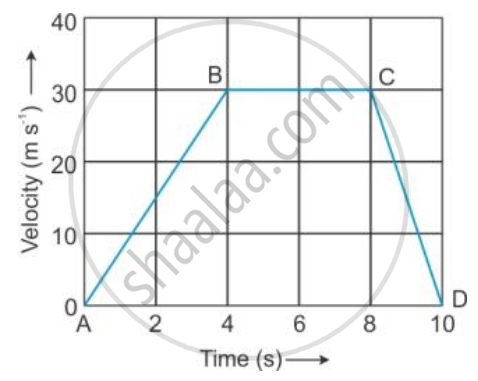Advertisements
Advertisements
Question
A train takes 2 h to reach station B from station A, and then 3 h to return from station B to station A. The distance between the two stations is 200 km. Find:
The average speed,
The average velocity of the train.
Solution
Here, total distance = (200 + 200) km = 400 km
Total time taken = (2 + 3) h = 5 h
(i) Average speed = Total distance travelled/total time taken = `(400 "km")/(5 "h")` = 80 km h-1
(ii) Average velocity of the train is zero because the train stops at the same point from where it starts, i.e. the displacement is zero.
APPEARS IN
RELATED QUESTIONS
Under what condition(s) is the magnitude of average velocity of an object equal to its average speed?
In addition to speed, what else should we know to predict the position of a moving body ?
Fill in the following blank with suitable word:
The physical quantity which gives both, the speed and direction of motion of a body is called its……………
The tip of seconds’ hand of a dock takes 60 seconds to move once on the circular dial of the clock. If the radius of the dial of the clock be 10.5 cm, calculate the speed of the tip of the seconds’ hand of the clock. `("Given" π= 22/7)`.
The diagram below shows the pattern of the oil on the road at a constant rate from a moving car. What information do you get from it about the motion of the car.

Express 15 m s-1 in km h-1.
A car accelerates at a rate of 5 m s-2. Find the increase in its velocity in 2 s.
Figure shows the displacement of a body at different times .

Calculate the average velocity during the time interval 5 s to 9 s ,
[Hint : From 5 s to 9 s , displacement = 7 m - 3m = 4m]
The velocity-time graph of a moving body is given below in Figure

The acceleration in parts AB, BC and CD.
How many variables are present in each equation of motion?
